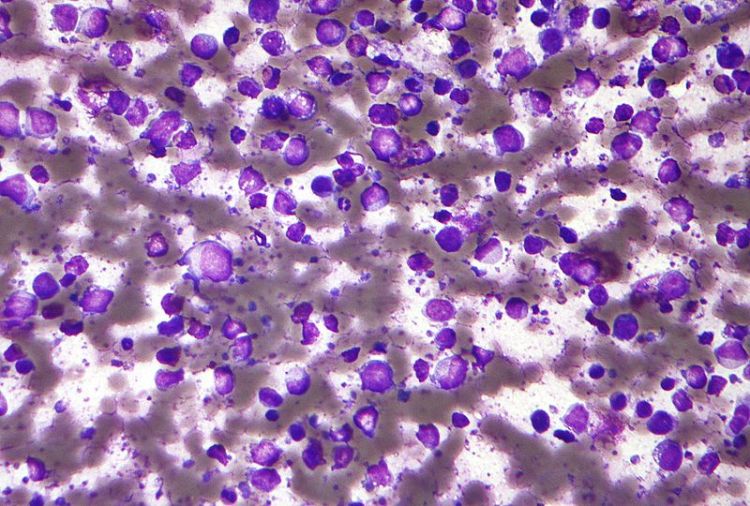Regulator of aggressive lymphoma discovered, raising hope for treatments


A research team led by Lixin Rui, PhD (pictured at upper right), assistant professor, Hematology, Medical Oncology and Palliative Care, has identified a molecular regulator that controls cell viability in activated B cell-like diffuse large B cell lymphoma (ABC DLBCL).
ABC DLBCL is the most common, aggressive, non-Hodgkin lymphoma. According to the National Cancer Institute, there were more than 660,000 people living with all forms of non-Hodgkin lymphoma in the United States in 2014. (The two major lymphoma subtypes are ABC and germinal center B-cell like, or GCB). There are few treatment options for ABC DLBCL, which has a cure rate of less than 50 percent.
In ABC DLBCL as well as many other forms of cancer, the transcriptional regulator STAT3 and its kinase JAK1 are in a continuous "on" state due to cytokine signaling. This process promotes survival of cancer cells.
“For the last two decades, STAT3 has been one of the most intensively studied genes,” said Dr. Rui. “STAT3 regulates gene expression necessary for normal immune response, but is deregulated in many diseases including cancer.”
Scientists in Dr. Rui's laboratory built on previous research finding that JAK1 induces expression of nearly 3,000 genes by an epigenetic mechanism, causing a positive feedback loop that promotes malignancy.
By inhibiting STAT3 in ABC DLBCL cells and using genome-wide analysis and whole-transcriptome profiling to identify genes that are directly regulated by STAT3 in this type of lymphoma, they discovered additional pathways by which cancer cells survive and proliferate in ABC DLBCL.
Surprisingly, the team found that STAT3 can dampen interferon signaling, a “death” pathway that is driven by the same genetic cause for STAT3 activation in cancer cells. Based on this, graduate student Fen Zhu tested whether inhibiting STAT3 enhances anti-tumor efficacy of lenalidomide, a clinical immunomodulatory drug that can trigger interferon production.
The strategy worked, both in cells and in mice, suggesting possible options for combination therapies for ABC DLBCL.
Photo caption: Micrograph of a diffuse large B cell lymphoma. (Public domain image licensed under CC-SA 3.0)
Resources:
- "Study provides a potential therapeutic strategy for aggressive lymphoma," UW School of Medicine and Public Health, January 11, 2018
- Lu L, Zhu F, Zhang M, Li Y, Drennan AC, Kimpara S, Rumball I, Selzer C, Cameron H, Kellicut A, Kelm A, Wang F, Waldmann TA, Rui L. 2018. Gene regulation and suppression of type I interferon signaling by STAT3 in diffuse large B cell lymphoma. Proc Natl Acad Sci U S A. 2018 Jan 16;115(3):E498-E505.